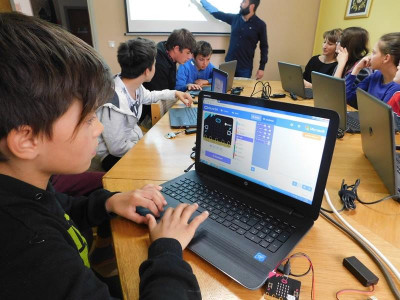STEAM education emerged by adding an artistic dimension to the original STEM implementations, integral in which scientific, technological, engineering, and mathematical disciplines are taught (Yakman, 2007). Art significantly contributes to creativity and science.
In STEAM education, elementary school students are provided with space for reflection, evaluation, and determination of the best way to achieve their goals and complete a project. Results are measured in the ways of thinking they have learned. Teachers might think that STEAM is the foundation of most schools and institutions, but STEAM projects involve subjects that are taught within the same lesson. With this philosophy, elementary school students can see the unique benefits of each discipline.
A fundamental component of STEAM education is project-based experiential learning. Young students work on a project specific to questions they are interested in. They are encouraged to determine the goal and choose which skills they want to explore, allowing them to discover and experiment with different methods. Adding an artistic component makes complex subjects such as mathematics and chemistry more accessible.
There is research in the medical field suggesting that art and creativity are generally very beneficial for the mental, emotional, and physical well-being of students. Sometimes we undertake creative pursuits such as writing, drawing, or acting because we enjoy them. Intuitively, we know that creativity is good for our students, and creative passions make them happy. It seems that science agrees with us on this.
![]()
Original text in Croatian:
STEM obrazovanje provedeno je kako bi se povećala konkurentnost u znanosti i tehnologiji u Sjedinjenim Državama 2003. godine. Kroz STEM studenti rješavaju različite probleme i postaju inovatori, izumitelji, logički mislioci i tehnološki pismeni ljudi (Morrison, 2006).
STEAM obrazovanje nastalo je dodavanjem umjetničke dimenzije izvornim STEM implementacijama u kojima se integralno podučavaju znanstveno, tehnološke, inženjerske i matematičke discipline (Yakman, 2007). Umjetnost daje veliki doprinos kreativnosti i znanosti.
U STEAM obrazovanju osnovnoškolcima se daje prostor za razmišljanje, ocjenjivanje i određivanje kako najbolje postići svoje ciljeve i dovršiti projekt. Rezultati se mjere u načinu razmišljanja koji su naučili. Učitelji bi mogli pomisliti da je STEAM temelj većine škola i institucija, ali STEAM projekti uključuju predmete koji se podučavaju unutar iste lekcije. Ovom filozofijom učenici osnovnih škola mogu vidjeti jedinstvene prednosti svake discipline.
Osnovna komponenta STEAM obrazovanja je praktično učenje temeljeno na projektima. Mladi studenti rade na projektu specifičnom za pitanja koja im se sviđaju. Potiče ih se da odluče o cilju i odaberu koje vještine žele istražiti, omogućujući im da otkriju i eksperimentiraju različitim metodama. Dodavanje umjetničke komponente čini složene predmete poput matematike i kemije pristupačnijima.
Postoje istraživanja u medicinskom području koja sugeriraju da su umjetnost i kreativnost općenito vrlo korisni za mentalnu, emocionalnu i fizičku dobrobit studenata. Ponekad poduzimamo kreativne potrage poput pisanja, crtanja ili glume jer u njima uživamo. Intuitivno znamo da je kreativnost dobra za naše učenike, a kreativne strasti ih čine sretnima. Čini se da se znanost slaže s nama u vezi ovoga.

